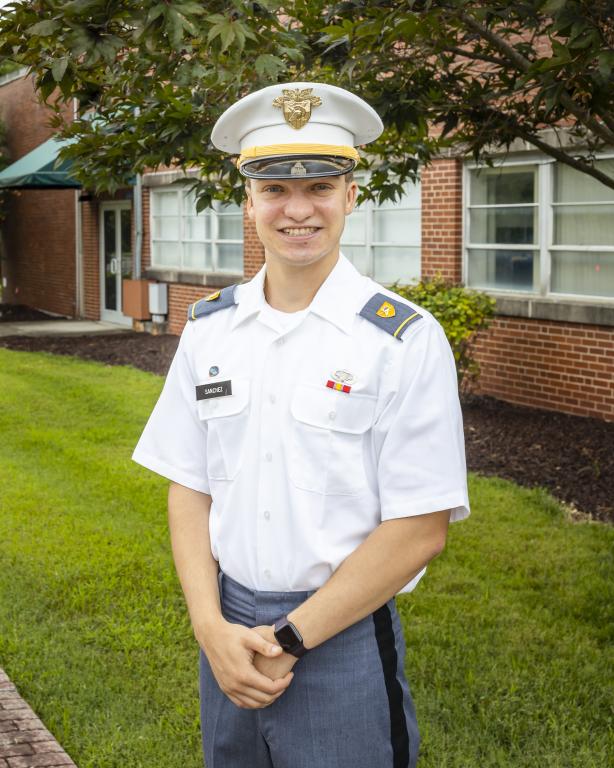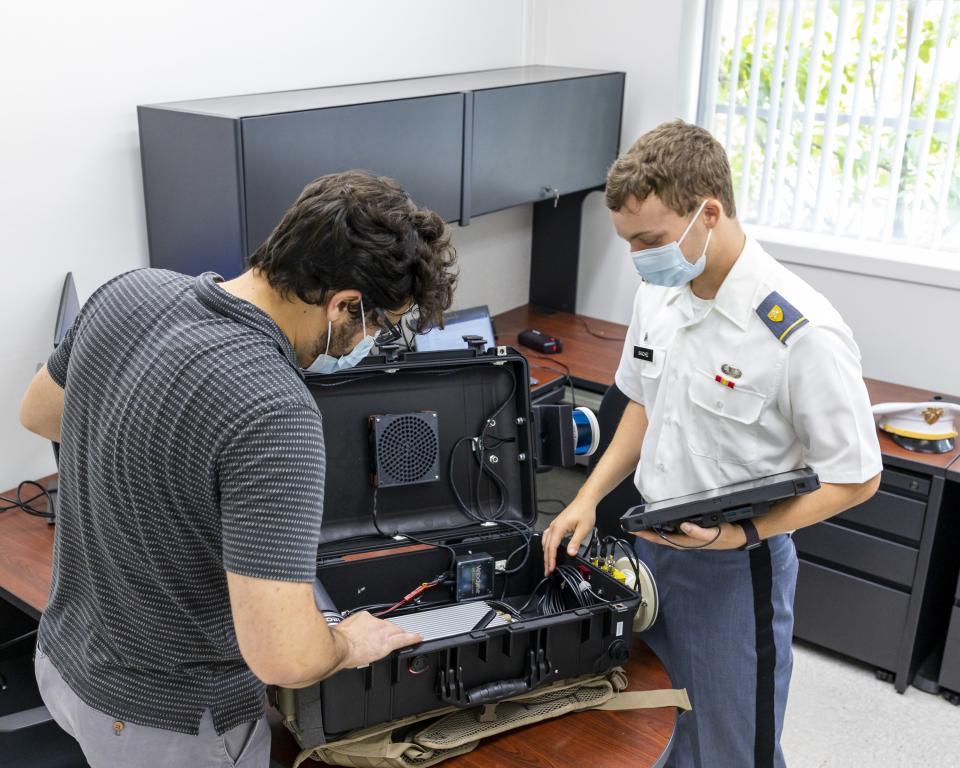
Earlier this year, ORNL hosted researchers from the United States Military Academy, or West Point, to collaborate on developments and methods in shared research. The opportunity opened mentoring pathways for West Point students and brought the first cadet, Andrew Sanchez, to the lab for a three-week assignment. Andrew was hosted by the Physics Division and exposed to ORNL’s science, staff, and environment while gaining hands-on experience with ongoing physics projects.
With the support of his ORNL mentors James Ghawaly and Nicolas Prins, Andrew worked on testing and improving the Virtual Test Bed, a computer program that runs simulations of nuclear detectors operating in environments with different levels of radiation exposure to evaluate the detector’s performance.
Working on the VTB enabled Sanchez to explore new concepts in computing that he had not previously encountered, such as neuromorphic computing, or electronic systems that emulate biological neural networks. Neuromorphic computing offers advantages in low energy consumption and scalability.

Andrew, who has a nuclear engineering background, says the experience has given him a new appreciation for the software and hardware developments behind nuclear detectors. “A detector is junk if you have a bad algorithm, and an algorithm can't do anything if it gets bad data from a detector,” he said. “Understanding how these different parts of the nuclear detection process work together has been very beneficial.”
The opportunity to collaborate with ORNL researchers has been a positive experience for Andrew, and he hopes to take the knowledge he’s learned in background radiation simulations with him back to West Point.
“I've had a lot of people be super kind and offer to show me around their labs or to take an hour to just teach me about their project, which has been super cool,” Andrew said. “It’s inspiring that everybody here gets to come into Oak Ridge and just have the opportunity to work on research in some domain that interests them.”
Andrew is the first cadet from West Point’s Physics and Nuclear Engineering Department to visit ORNL, and both organizations plan to bring more cadets to the lab for future research opportunities. —Daniel Ruiz

